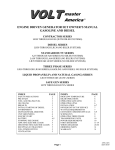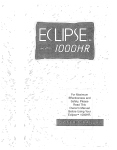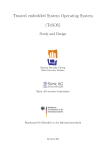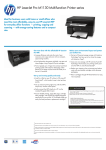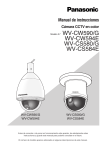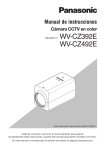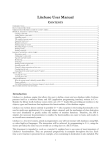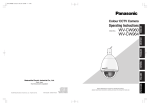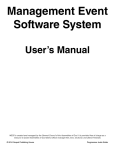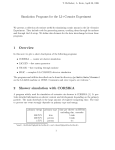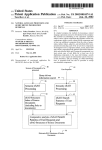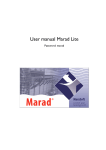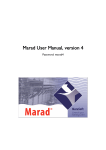Download User`s Manual - CNA Corporation
Transcript
CIS D0012061.A2/Final
December 2005
The Integrated Ship Database
A Rapid-Access Database of
Naval Ship Information
A User’s Manual
Gregory Suess • Lynette McClain
4825 Mark Center Drive • Alexandria, Virginia 22311-1850
Approved for distribution:
December 2005
Maureen A. Wigge, Director
Operational Policy Team
Operations Evaluation Group
This document represents the best opinion of CNA at the time of issue.
It does not necessarily represent the opinion of the Department of the Navy.
Distribution limited to DOD agencies. Specific authority: N00014-00-D-0700.
For copies of this document call: CNA Document Control and Distribution Section at 703-824-2123.
Copyright 2005 The CNA Corporation
Contents
Introduction . . . . . . . . . . . . . . . . . . . . . . . . . . . .
1
The Integrated Ship Database file . . . . . . . . . . . . . . . .
File structure . . . . . . . . . . . . . . . . . . . . . . . . .
Data access and protection . . . . . . . . . . . . . . . . .
3
3
3
Structure of the database . . . . . . . . . . . . . . . . . .
The fields . . . . . . . . . . . . . . . . . . . . . . . .
From the Naval Vessel Register. . . . . . . . . .
From the other data sources . . . . . . . . . . .
Fields with hyperlinks. . . . . . . . . . . . . . .
The records – database composition and NVR status
.
.
.
.
.
.
.
.
.
.
.
.
.
.
.
.
.
.
5
5
5
13
14
22
Querying the database. . . . . . . . . . . . . . . .
PivotTable . . . . . . . . . . . . . . . . . . .
Hiding and unhiding data . . . . . . . .
Query sheets with a double-click . . . . .
Unhiding the SASDT Force information
The AutoFilter feature of Excel . . . . . . . .
.
.
.
.
.
.
.
.
.
.
.
.
.
.
.
.
.
.
.
.
.
.
.
.
.
.
.
.
.
.
.
.
.
.
.
.
.
.
.
.
.
.
25
25
25
33
33
36
Appendix: Organization by ship status .
Overall organization . . . . . . . .
NVR’s method. . . . . . . . .
Our structure . . . . . . . . .
U.S. Navy . . . . . . . . . . . . . .
Military Sealift Command . . . . .
Maritime Administration . . . . .
.
.
.
.
.
.
.
.
.
.
.
.
.
.
.
.
.
.
.
.
.
.
.
.
.
.
.
.
.
.
.
.
.
.
.
.
.
.
.
.
.
.
.
.
.
.
.
.
.
41
41
41
43
44
49
53
Glossary . . . . . . . . . . . . . . . . . . . . . . . . . . . . . .
57
References . . . . . . . . . . . . . . . . . . . . . . . . . . . . .
59
List of figures . . . . . . . . . . . . . . . . . . . . . . . . . . .
61
.
.
.
.
.
.
.
.
.
.
.
.
.
.
.
.
.
.
.
.
.
.
.
.
.
.
.
.
.
.
.
.
.
.
.
.
.
.
.
.
.
.
i
ii
List of tables . . . . . . . . . . . . . . . . . . . . . . . . . . . .
63
Distribution list . . . . . . . . . . . . . . . . . . . . . . . . . .
65
Introduction
Analytical and information support for Navy decision-makers and
staff action officers demands easy, quick access to reliable information about ships. In this CNA Interactive Software (CIS) product, we
offer a relatively quick and easy-to-learn way to find information on
naval ships—future, current, and past—from authoritative sources on
the Internet. We present the data in a simple database titled the Integrated Ship Database. The database resides in a Microsoft Excel workbook.
Our fundamental data source is the on-line Naval Vessel Register
(NVR)—The Official Inventory of US Naval Ships and Craft [1]. The NVR
contains a wealth of information on ships and service craft over the
course of a vessel’s life cycle. Although the on-line information is
quite useful, it is not available in the standard database format of
fields and records. Therefore, it is of only limited use to researchers
and others who must search, sort, query, and count. We believe the
information could be even more useful if it were available in such
form.
To facilitate rapid access to other sources of ship data on the Internet,
we inserted hyperlinks to the U.S. Navy Chief of Information
(CHINFO) United States Navy Fact File [2], the Military Sealift Command (MSC) Ship Inventory web site [3], the Naval Historical Center
(NHC) Dictionary of American Naval Fighting Ships (DANFS) [4], and
the U.S. Department of Transportation Maritime Administration
(MARAD) Property Management & Archive Record System (PMARS) [5].
In addition, we have drawn on National Defense Reserve Fleet
(NDRF) ship inventory that is available on MARAD’s web site [6].
We hope that this database will be useful to decision-makers, staff
officers, and watch-standers in Navy and MSC operations centers, as
well as to naval operations analysts. We especially hope that new analysts—both now and in the future—will find the database particularly
1
useful as they learn how naval vessels are identified and classified and
where to find information about ships. It is to these analysts that we
dedicate this product.
Organization of the paper
This memorandum describes the Microsoft Excel ship database workbook, which contains the database and an associated pivot table. The
pivot table summarizes the content of the database and serves as a
mechanism for quick, automated queries of the database.
After a brief introduction to the database, we describe its structure.
We identify and characterize the fields and records contained within
it. We briefly describe the data in each field, and summarize the
make-up of the 2,510 records in the database. We also amplify on the
information available in the fields through hyperlinks to the NVR,
CHINFO, MSC, NHC, and MARAD on-line databases.
In the next section, we discuss how to use the standard database operations of Excel to query the database. Specifically, we consider the
associated pivot table worksheet and Excel’s autofilter function. To
illustrate, we provide “snapshots” as examples of these functions.
2
The Integrated Ship Database file
This CNA Interactive Software product consists of two pieces: (1) this
documentation, and (2) a Microsoft Excel workbook (Integrated Ship
Database_Sep05.xls).1 In this section, we describe the basic structure of
the file as well as access to and protection of the data.
File structure
The Excel workbook consists of three worksheets. The sheet named
DataTableOriginal contains the fields and records of the Integrated Ship
Database. The second sheet, named DataTableCopy, is a blank sheet we
inserted that enables you to use all of Excel’s analysis features while
protecting the data in DataTableOriginal. The third sheet, called PivotTable, can be used for rapid analysis and querying of the database.
Data access and protection
We have protected the data in the file by making it a password-protected, read-only file. That is, you must open it as “read only”; you
cannot use the password option to obtain access. We hold the password in order to maintain the integrity of the original source file, and
to control updating and modification of the data.
The read-only file attribute will allow you to manipulate the data, but
you won’t be able to save the file under its original name. To save your
working version, you must rename the file.
1.
The data in the database is current as of September 2005. Our intention
is to update the database quarterly. In the meantime, the hyperlinks in
the database can be used to access data currently available online.
3
To access the data, simply open the Excel file. Select “Read Only”
when asked for a password. The file will open, displaying the top-most
records of the database in the DataTableOriginal worksheet.
As we mentioned, DataTableOriginal is password protected. If you only
want to search the data, use the hyperlinks, and explore the database
with PivotTable, you won’t need to take any further steps.
However, Microsoft Excel restricts the sorting and filtering features in
a protected worksheet. If you wish to sort and filter the database,
you’ll need to copy the data from DataTableOriginal into DataTableCopy.2
Protecting the data in this way not only gives us control over the data,
but also maintains the original data as a reference in any file that you
might modify for your purposes.
2.
4
Although we could have placed an unprotected copy of the database in
DataTableCopy, we chose not to do this in order to keep the file as small
as possible.
Structure of the database
Figure 1 displays the opening view of the database in the Excel application. This view shows some of the fields and a small portion of the
records. The worksheet tabs at the bottom of the sheet control the
access to and display of the three worksheets of the file: DataTableOriginal, DataTableCopy, and PivotTable.
In figure 2, the remaining fields (from MSC Link through Date Last
Updated) are shown. You will notice that the left-most fields—Ship
Name, Prefix, and Hull No.—remain in view even when you move the
sheet to view the fields on the right.
The colored portions of DataTableOriginal distinguish the records of
the various ship status categories in the NVR. We’ll describe these categories later. But first, let’s look at the field structure in more detail.
The fields
From the Naval Vessel Register
We initially defined the fields for our database after reviewing the
NVR web site for ships. The NVR web site contains a separate page of
detailed data for each ship, as shown for USS John C. Stennis (CVN 74)
in figure 3. Table 1 is a list of the fields in the NVR ship pages.
Downloading the data
Unfortunately, not all of these data can be easily retrieved from the
web site for import into a database application. The Status of Ships display offers one way to easily extract data for several fields. To get to
the Status of Ships display, use the link on the “SHIPS” page of the NVR
site (figure 4). Each status group title in Status of Ships (figure 5) links
to a page like the one shown in figure 6, with information from the
following fields: Ship Class, Hull No., Ship Name, Unit Identification Code
(UIC), and Homeport. Transferring these data to Excel involved a
simple cut-and-paste followed by text-to-column parsing into distinct
fields.
5
Fields
Records
6
Figure 1. Opening view of the database
Worksheet Tabs
Figure 2. View of the remaining fields
7
Figure 3. NVR ship web page for USS John C. Stennis (CVN 74)
Berth:
Maintenance Category:
MARAD Type:
Decommission Date:
Years from Commission to Decommission:
Stricken Date:
8
Table 1. Fields from NVR dataa
Type of information
Unit Identification
Location
Status/Force/Type
History
Physical Characteristics
Propulsion
Custody/Design Agent
Information currency
NVR fields
Ship Name
Previous Names
Ship Name Prefix
Unit Identification Code (UIC)
Hull Number
Class
Ship Type
Fleet
Homeport
Berth
Status
Date Status Changed
Force
MARAD Type
Builder
Award Date
Keel Date
Launch Date
Age (since launch)
Delivery Date
Age (since delivery)
Commission Date
Decommission Date
Years from Commission to
Decommission
Stricken Date
Overall Length
Waterline Length
Extreme Beam
Waterline Beam
Maximum Navigational Draft Draft Limit
Light Displacement
Full Displacement
Dead Weight
Hull Material
Propulsion Type
Number of Propellers
Accommodations: Officers;
Enlisted
Custodian
Planning Yard
Date of Last Change to Information
a. We have incorporated the fields in italics in the Integrated Ship Database.
9
Figure 4. NVR SHIPS web page
10
Figure 5. NVR status groups
11
Figure 6. List of units in Active status category
12
Other NVR data were relatively easy to enter manually. These fields
included the Prefix to the ship name (e.g., USS, USNS, MV, SS), Previous Names for the ship, and the specific battle or support Force2 to
which a ship is assigned.
Still other data—specifically, the various dates related to ship history,
status change, and data currency—took more time to enter. We
decided to include these data because of their considerable value for
historical research and analysis.
We added the Type field although it has information that can be
found in the Hull Number field. Having a separate field for ship type
facilitates sorting and counting in the pivot table.
From the other data sources
CHINFO Navy Fact File
The database does not contain specific information from the Navy
Fact File. Instead, there are hyperlinks to the Fact File in the Class field.
MSC Ship Inventory
The field, MSC Link, contains the ship’s name as presented in the
MSC Ship Inventory database.
MARAD Property Management & Archive Record System
The information from MARAD is in column K, in the field named
MARAD NDRF Program-Type / Status. The information in the field in
the program, type, and status description is as presented in the
monthly NDRF inventory report [6]. We did not include the data for
the numerous other ships in the PMARS data that are not in the
2.
This field reports the Battle Forces Category used in the Ships and Aircraft Data Supplemental Table (SASDT) of the Navy’s budget reporting
system. One major grouping, Ship Battle Forces, comprises: Battle Forces;
Mobilization Forces-Category A Assets, Strategic Forces, and Support Forces. The
second major grouping, Local Defense and Miscellaneous Support Forces,
includes: Strategic Sealift Forces, Auxiliary Ships, and Mobilization Force-Category B Assets.
13
NDRF, specifically those in the “Disposed” category of USN and MSC
ships.
NHC Dictionary of American Naval Fighting Ships
The field, DANFS Link, contains the name of the ship as it appears in
the DANFS. The ship history information is accessed through hyperlinks.
Fields with hyperlinks
In figure 7, we show the fields in the database that contain the hyperlinks. To activate a link, simply click once on the hypertext in a cell
defined by the particular ship record and link destination of interest.
The fields with hyperlinks include the following:
• The Hull No. field contains the links to the NVR pages for individual ships. For example, figure 3 is the NVR page for USS John
C. Stennis.
• As mentioned above, the Class field, with ship class from the
NVR, contains hyperlinks to the type and class information in
the CHINFO Navy Fact File. Figure 8 shows the page from the
Fact File for aircraft carriers. (Note: Links on a Fact File page can
take you to the web pages of individual ships. Figure 9 shows the
page for USS Abraham Lincoln (CVN 72), which was accessed
through the link shown at the bottom of the Fact File page for
carriers.)
• The links in the Force field connect to the respective definitions
in the NVR for the entries.
• MSC Link accesses the pages for individual ships in the MSC
Ship Inventory. The page for USS Arctic (T-AOE 8) is shown in
figure 10.
• The links in the field, MARAD NDRF Program-Type/Status, connect to the individual ship pages in the PMARS database. An
example, the page for Neosho, is shown in figure 11.
• DANFS Link connects users to the appropriate page for a ship
name in the NHC Dictionary of American Naval Fighting Ships
14
database. The DANFS page for USS Kitty Hawk (CV 63) is
shown in figure 12. Since several ships may have the same name
at different points in time, you may have to search through the
web page to find the specific ship of interest.
• The links in the Homeport field take you to the NVR pages that
list all ships with the same homeport as the ship of the record.
Figure 13 shows the list of ships homeported in Yokosuka,
Japan.
15
16
Figure 7. Fields with hyperlinks
Figure 8. Portion of Navy Fact File page for aircraft carriers
17
18
Figure 9. Web page for USS Abraham Lincoln
Figure 10. MSC Ship Inventory page for USNS Arctic
19
Figure 11. MARAD PMARS page for Neosho
20
Figure 12. DANFS page for USS Kitty Hawk (CV 63)
21
Figure 13. NVR homeport page for ships in Yokosuka, Japan
The records – database composition and NVR status
The database contains a total of 2,510 records.3 As mentioned above,
we grouped the records by ship status and used colors to set them
apart, generally according to the NVR’s ship status groups listed in
figure 5. Table 2 summarizes the composition of the database by these
status groups.
3.
22
All but 96 of the records came from the NVR. Of those 96 records, 86
came from MARAD’s PMARS database and 10 came from the MSC Ship
Inventory.
For a more in-depth breakout, please refer to the PivotTable worksheet in the Excel file. There you will be able to see the composition
by the specific status descriptions in the NVR. We also refer you to the
appendix for a detailed discussion of ship-status categorization.
Table 2. Database composition
Category
U.S. Navy Ships
Authorized
Under Construction
Active
Naval Reserve Force, Active
Stand down
Inactive – In reserve
Inactive – Leased, loan, or grant
Inactive – To be disposed of
Stricken
Disposeda
Otherb
Military Sealift Command
No. of records
1,933
23
17
244
23
1
20
14
8
72
1,510
1
117
Naval Fleet Auxiliary Force
Special Mission Support
Prepositioning Program
Sealift Program
35
24
30
28
Maritime Administration
460
RRF – Prepositioning Program
RRF – Sealift Program
NDRF – Retention for mobilization
NDRF – Non-retention
NDRF – Custody for Navy
Disposed by MARAD
5
54
49
141
1(12)c
210
TOTAL
2,510
a. Includes disposal of ships that spent a portion of their lifetime
under custody of MSC.
b. Integrity (AGOS 24): “Hull number assigned, authorized to be
built but never awarded, authorization cancelled.”
c. Of the 12 ships in the NDRF under MARAD custody for the
Navy, one ship (Proteus (EX AS 19)) is not included in the NVR
database.
23
This page intentionally left blank.
Querying the database
PivotTable
For rapid querying of the database and counting of the records within
it, we built PivotTable. It uses four fields from the database: Ship Name,
Status, Type, and Force. We grouped the status titles similar to the way
described in our discussion above on the structure of the database.
Figure 14 shows the opening view of the pivot table.
Ship Name, Status, and Type are in columns B, C, and D, respectively.
The grouped “field” in column A, which we named Status Category,
combines the Status groups for MSC and MARAD. Due to the volume
of USN records, we were unable to gather them into a single group.
Thus, we grouped these records by phase of the life-cycle and annotated each group with “USN:” as a prefix. Figure 14 shows the count
of each group in column M.
Hiding and unhiding data
One of the very nice features of a pivot table is that data can be analyzed easily if you simply double-click the mouse on the text cells
found beneath the title fields (highlighted in grey). Double-clicking
a cell at one level will unhide the cells at the next level down. For
example, double-clicking on the “MSC” cell under Status Category will
reveal groupings by various titles in the Status field as shown in figure
15. You can see the sub-total of records for each Status title in column
M in addition to the rolled-up total of 117 records at the top of the
open section.
Double clicking a second time in the same location will “re-hide” the
cells just unhidden.
Figure 16 has a view of the Status and Type fields unhidden under the
Status Category, “USN: Under Construction.” In this view, you can see
25
Figure 14. Opening view of pivot table
26
Figure 15. Example of an ungrouped view at the Status level
27
Figure 16. View with Status and Type fields under “USN: Under construction” Status Category
opened
28
the numbers of ships under construction by type. To view the specific
list of ships by name, double-click on each of the cells designating
type. This will produce the view in figure 17.
There is another way to hide and unhide the details in a pivot table,
i.e., by using drop-down menus. For example, if you select the gray
cell, Status Category, and right click, the option menu in figure 18 will
appear. By flying the cursor over Group and Outline, you will see Hide
Detail, Show Detail, Group, and Ungroup options. Selecting Show Detail
will unhide the next lower level of the pivot table for all Status Category
cells. Figure 19 displays the uppermost portion of a pivot table with
these fields open.4
4.
Warning: With this approach, you will see a “Hide” command on the
menu when you right-click. If you select it, you will remove that variable
from the pivot table. There is no “Unhide” command to reinsert it.
You’ll have to use the pivot table controls to reinsert. If you don’t know
how to do this, either consider it a learning opportunity or find someone who can help you. Alternatively, you can close the file without
saving and reopen it to restore it to the original condition.
29
Figure 17. View with Status, Type, and Ship Name fields opened under “USN: Under construction”
30
Figure 18. Hide Detail and Show Detail control of pivot table display
31
Figure 19. Completely open Status Category, Status, Type, and Ship Name fields
32
Query sheets with a double-click
The pivot table has yet another feature for rapidly querying the
database. By double-clicking on any cell in column M, you can
produce a query report on a new, separate worksheet for those units
being counted in that cell. Excel will automatically name and number
the query sheet. To return to the pivot table, just click on its tab.
For example, double-clicking on cell M7 of the opening view (see
figure 14) will generate the query sheet shown in figure 20 for the 17
ships under construction for the USN.
Unhiding the SASDT Force information
The breakout by SASDT Ship Battle Force category in the pivot table
is in columns E through L. In the opening view of the pivot table,
these columns are hidden. Unhiding them will result in the display in
figure 21.
33
34
Figure 20. Query sheet generated from the pivot table
Figure 21. Pivot table showing SASDT Ship Battle Force unhidden
35
The AutoFilter feature of Excel
Excel’s AutoFilter offers still another way to rapidly query the database. Unfortunately, Excel disables AutoFilter when a worksheet is
protected. Because we have protected DataTableOriginal, we have
included the sheet DataTableCopy in the workbook. Make sure you
create a copy of the original one.
Figure 22 is a view of DataTableCopy that shows the drop-down-menu
path to toggle the AutoFilter off and on. In this view, the AutoFilter is
on, as indicated by the check mark. Further indication of the
AutoFilter being on is given by the gray drop-down boxes in each of
the field name cells in row 1 of the spreadsheet.
Now we’ll present an example to show how the AutoFilter works. Let’s
identify all the aircraft carriers in the database. First, we draw down
the filter options for the Type field and select the Custom option, as
shown in figure 23.
The Custom Autofilter, in which one can enter filtering criteria,
appears. It is shown in figure 24. Here we’ve entered “begins with”
and “CV” to select all records for aircraft carriers. Figure 25 shows a
partial list of the records selected.
36
Figure 22. View of DataTableCopy with Autofilter toggled on
37
38
Figure 23. Autofilter drop-down menu showing Custom Autofilter option selected
Figure 24. Custom filter set to find aircraft carriers
39
40
Figure 25. Portion of database filtered for aircraft carriers
Appendix: Organization by ship status
In this appendix, we discuss the organizational structure by ship
status in the PivotTable sheet in Integrated Ship Database. First, we discuss our overall organization and how we derived it from the NVR’s
presentation on ship status. Then we present our organizing structure. We show the specific NVR status definitions within each status
category.
Overall organization
NVR’s method
We based our method of organization on the NVR’s structure in
figure 26. The first level of organization distinguishes between Navy,
MSC, and MARAD custody. The organizing principle for the next
level of organization varies within each group.
• The principle for Navy ships is generally based on the “cradle
to grave” life-cycle of a ship. In addition, commissioned vessels
in the Active fleet are distinguished from those in the Naval
Reserve Fleet, Active.
• The structure for MSC ships revolves around its four business
programs: the Naval Fleet Auxiliary Force Program, the Special
Mission Program, the Prepositioning Force Program, and the
Sealift Program.
• The organization for MARAD ships is based on the structure of
the NDRF in terms of RRF, Custody, Retention, and Non-Retention programs discussed in [6].
NVR also defined its ship status organization as shown in the list in
figure 5. That list includes: ten Navy life-cycle groups; four groups
related to MSC business programs and one group for MSC contractoperated ships; one group for ships in MARAD custody; and one Special, Miscellaneous group that consists of an assortment of MARAD and
MSC ships.
41
Figure 26. Status of Ships organization from the NVR
42
Our structure
We distilled our organizing structure out of the various schemes we
found. It is similar to all of them, but not identical to any of them.
Figure 27 summarizes our approach.
Figure 27. Status organization for Integrated Ship Database pivot tablea
NVR, MSC, & MARAD Ship Inventory Data
Level 1
USN
MSC
MARAD
Level 2
Authorized
NFAF Program
NDRF, Active
Under Construction
Spec. Msn. Program
RRF
Retention
Active
PREPO Program
Custody
Non-retention
NRF,A
Sealift Program
Disposal by
MARAD Sale
Inactive: In reserve
Inactive: Lease,
Loan, or Grant
Disposal by
MARAD
Exchange
Stricken
Disposal by
Title Transfer
to MARAD
Disposal
Other
Level 3
Detailed NVR Status
Detailed NVR, MSC Status
Detailed NVR, MSC,
MARAD Status
a. The Level 2 structure under USN is actually used in PivotTable. The Level 2 structures under MSC and MARAD
are not explicit in PivotTable, but are notional. This is the reason for their lighter appearance.
Our structure comprises three levels, at least conceptually. The top
level distinguishes records by custodian: Navy, MSC, or MARAD. The
lowest level is the detailed status description in the source database:
For the records from the NVR, we used the specific NVR status. For
the MSC records not in the NVR, we assigned one of the NVR status
descriptions based on program descriptions in the MSC Ship Inventory
43
system. For MARAD ships not in the NVR, we assigned the status:
MARAD/NDRF, Not in NVR. The MARAD NDRF Program-Type/Status
field elaborates further on these records.
The middle level is less straightforward. The Level 2 structure under
USN is the life-cycle structure We use these states explicitly in the
Status Category grouping in PivotTable.
The Level 2 structures under MSC and MARAD do not explicit
appear in PivotTable. They are conceptually reasonable, however, in
that they underlie the detailed status descriptions in the NVR and are
consistent with the several higher-level depictions of NVR status categories.
In the following sections, we present NVR definitions for the status
groups in Level 2 and the detailed status descriptions in Level 3.
U.S. Navy
The Level 2 definitions from NVR for USN ships are quoted below.
The Level 3 specific descriptions in the database are italicized in the
bulleted lists under each Level 2 group.
Authorized. “Funding has been approved by Act of Congress for new
construction or conversion.”
— Authorized, for US Navy construction
Under Construction. “A contract has been awarded to a builder for
new construction or conversion.”
— Under construction in US by Navy, unassigned to fleet
Active. “A ship or service craft that has been formally accepted by the
Navy that is either in-service or in commission.”
— Active, in commission
— Active, in service.
Naval Reser ve Force, Active. “Ships of this category are still
commissioned ships. They have a reduced or skeletonized crew of
44
active duty personnel assigned to provide training of assigned
reser vists for limited operations and maintenance. Under
mobilization, reservists assigned to a particular ship will be activated,
complementing the active duty personnel.”
— Naval Reserve Force, Active
Stand Down. “Start of the inactivation cycle. These hulls are not
counted in either the active or inactive fleet counts.”
— In Commission, in Reserve (Stand Down), commencement of inactivation availability
Inactive. “A ship or service craft that has been taken out of
commission or out of service for retention as a mobilization asset or
for pending disposal.”
— Inactive, Out of Commission, in reserve
— Inactive, out of service, in reserve
— Inactive, reinstated in the Naval Vessel Register, in reserve, out of
Commission
Leased. “A ship or service craft that has been inactivated and leased
to a foreign government for a specified period of time with title
retained by the US Navy.”
— Leased (not SAP)
— SAP, loaned or leased
— SAP, grant aid
Loan. “A ship or service craft owned by the US Navy and loaned to
contractors or scientific institutions.”
— Loaned (not SAP), loan was renewed on date shown in “Status
Date “
— Loaned (not SAP), loan was effective/ renewed on date shown in
“Status Date”
— Loaned indefinitely and carried in the Ship Donation Program as
a Museum and Memorial
45
Stricken. “A ship or service craft formally removed from the Naval
Vessel Register by SECNAV on recommendation of CNO. A legal
preliminary to disposal.”
• Scrapping, Recycling5
— Stricken, to be disposed of by submarine recycling
— Stricken, to be disposed of by scrapping
— Stricken, to be disposed of by recycling
• Navy Sale
— Stricken, to be disposed of by the Security Assistance Program (SAP),
for cash sale
— Stricken, sold, but Contractor defaulted, repossessed by the Navy,
contract terminated
— Stricken, to be disposed of by Navy sale
— Stricken, sold, but Contractor defaulted, repossessed by the Navy,
contract terminated, to be resold
• Donation, Historic Memorial
— Stricken, on donation hold as a museum and memorial
— Stricken, retained by Navy as museum
— Stricken, available for donation as a museum and/or memorial
— Stricken on 08/20/1994, moved from donation hold status to disposal as an experimental ship and then returned to donation hold
status again
• Experimental/Target
— Stricken, to be disposed of in support of Fleet training exercise”
• Transfer to other government agencies, etc.
5.
46
The lists of Level 3 status descriptions for Stricken and Disposal are quite
long. We grouped them as shown here as an aid to understanding.
— Stricken, to be disposed of by transfer to government agencies, activities, foreign countries (not SAP), MARAD, Sea Scouts, etc.
• Retain
— Stricken, to be disposed of, retain as logistics support asset
— Stricken, to be disposed of, retain as submarine moored training
ship
• Other
— Stricken
— Stricken, to be disposed of, type of disposal not known
Disposed. “Navy assets must first be stricken from the Naval Vessel
Register before they can be disposed of. Once stricken their disposition can be by several methods: Scrapping; Transfer to MARAD; Foreign Transfer; Experimental/Target; Donation; Historic Memorial;
Transfer to Other Government/Non-Government Agencies; and
Navy Sale.”
• Scrapping, Recycling5
— Disposed of, sold by Defense Reutilization and Marketing Service
(DRMS) for scrapping
— Disposed of by scrapping, cannibalization
— Disposed of, sold for scrapping
— Disposed of by scrapping, dismantling
— Disposed of by submarine recycling
— Disposed of by recycling
— Disposed of, resold by Defense Reutilization and Marketing Service
(DRMS) for scrapping
— Disposed of, sold by Defense Reutilization and Marketing Service
(DRMS) for reuse/conversion
• Foreign transfer
47
— Disposed of through the Security Assistance Program (SAP), transferred, cash sale, ex-US fleet hull foreign military sale case number
assigned
— Disposed of through the Security Assistance Program (SAP), transferred, Foreign Assistance Act (FAA) Section 516, Southern Region
Amendment
— Disposed of, built in US for foreign government (not SAP)
— Disposed of, hull transferred to foreign government (not SAP)
— Disposed of through the Security Assistance Program (SAP), transferred, grant aid, ex-US fleet hull
— Disposed of through the Security Assistance Program (SAP), transferred, Foreign Assistance Act (FAA) Section 519, Southern Region
Amendment
— Disposed of through the Security Assistance Program (SAP), transferred, Foreign Assistance Act (FAA) Section 517, Southern Region
Amendment
— Disposed of through the Security Assistance Program (SAP), transferred, grant aid, continental US constructed for SAP
— Disposed of through the Security Assistance Program (SAP), transferred, Military Assistance Service Funded, ex-US fleet hull
• Experimental/target
— Disposed of in support of Fleet training exercise
— Disposed of, hull stricken, for use in test and research work
• Transfer to other government/non-government agencies
— Disposed of by transfer to other Government Agencies, States,
Schools, Sea Scouts, etc.
• Donation, Historic Memorial
— Donated as a Museum and Memorial
— Dedicated as a Memorial
— Donated as a Memorial
48
• Miscellaneous
— Disposed of by abandoning, burning, scuttling, or sinking
— Disposed of, destroyed by enemy action with the Japanese in World
War II
— Disposed of by return to owner
— Disposed of by navy title transfer
— Disposed of, hull stricken, disposition unknown, data shown is
stricken
— Disposed of, sold by Defense Reutilization and Marketing Service
(DRMS) for reuse and conversion to a power barge
Other. One ship, the Integrity (AGOS 24), was not categorized into
another USN status group because of its peculiar and unique status
title. The NVR does not have a status category Level 2 named,
“Other.” We added it, to accommodate this exception.
— Hull number assigned, authorized to be built but never
awarded, authorization cancelled
Military Sealift Command
The Military Sealift Command organizes itself around four business
programs. We quote the NVR descriptions for these programs and
present the associated Level 3 status titles in italics.
Naval Fleet Auxiliary Force. “The NFAF provides direct support for
Navy combatant ships allowing them to remain at sea for extended
periods of time. These ships perform underway replenishment
services for Navy battle groups and deliver food, fuel, spare parts and
ammunition. Some NFAF ships provide ocean towing and salvage
services. NFAF ships are crewed by civil service mariners and each
ship carries Navy departments ranging in size from four to forty-five
people.”
“Civilian crews operate the ships and perform underway replenishment and provide other logistics services to the fleet. Military personnel provide communications support, coordinate supply operations
49
and conduct military helicopter operations. In addition to logistics
operations, the NFAF has two hospital ships, USNS Mercy (AH 19) and
USNS Comfort (AH 20), designed to provide emergency on-site medical care for our US forces in a war or contingency. These two ships are
maintained in an Reduced Operating Status (ROS) but can be fully
operational, crewed, and ready for deployment within five days with
1,200 active duty medical personnel and 70 civil service mariners.”
— Military Sealift Command (MSC) Naval Fleet Auxiliary Force
— Reactivated and assigned to the Military Sealift Command (MSC)
Naval Fleet Auxiliary Force
Special Mission Program. “Ships of this type are both U.S. government-owned and chartered vessels and are operated by civil service
mariners or mariners employed by companies under contract to
MSC. Military and civilian scientists and technicians carry out unique
missions on various types of ships. SMSs6 provide highly specialized
support services for their customers and often work in some of the
most remote areas in the world. Some of SMSs’ missions are:
oceanographic surveys; missile tracking; coastal surveys; cable laying
and repair; submarine escort; deep submergence rescue support; and
other Navy operations.”
— Military Sealift Command (MSC), Special Mission Support
Prepositioning Program. “The Military Sealift Command (MSC) has
operational control of MSC chartered commercial ships and MARAD
Ready Reserve Force (RRF) ships stationed at Diego Garcia and
Guam/Saipan for the support of U.S. Army, Air Force, and Navy
Requirements.”
Army Prepositioning Afloat (APA). “Currently there are 12 Army PREPO
ships deployed to USCINCPAC AOR as part of the Afloat Prepositioning Force (APF). These ships carry Army War Reserve Stocks No. 3
(AWR-3) cargo and consist of seven RO/ROs carrying Army unit
equipment. One Auxiliary Crane Ship (ACS), three LASH ships carrying ammunition, rations, and other non-ammunition cargo, and
6.
50
SMS: Special Mission Ship.
one Flo-Flo/Semisubmersible ship which carries Army port support
equipment. AWR-3 ships carry a US Army Brigade Afloat along with
Combat Service Support and Humanitarian Assistance cargo. Eventually constructed or converted Large Medium Speed RO/ROs
(LMSR) will replace the RRF ships supporting the APA program.”
“US Air Force (USAF) Sponsored PREPO Ships. Two PREPO ships, one
LASH and one breakbulk, carry USAF munitions.”
“US Navy (USN) Sponsored PREPO Ships. One heavy lift/breakbulk ship
carries a 500-bed combat tactical zone US Navy fleet hospital. This
cargo is stored in ISO units within controlled temperature/humidity
limits.”
“Defense Fuel Supply Center (DFSC). There are three PREPO tankers carrying petroleum (POL) products for use by service components as
part of the prepositioned war reserve program of the DFSC. Two of
these tankers are equipped with Offshore Petroleum Discharge
System (OPDS) and are capable of in-stream discharge of POL. The
third PREPO tanker is the USNS Henry J. Kaiser (T-AO 187) and is
capable of console operations with additional manning and rig activation.”
— Military Sealift Command (MSC), in service, contract operated
{Prepositioning Program} 7
— Special, chartered by MSC, listed here as part of the U.S. Navy Ship
Battle Forces {Prepositioning Program}
— Military Sealift Command (MSC) {Prepositioning Program} 8
Sealift Program. “The mission of the Sealift Program is to provide
ocean transportation to the Department of Defense by meeting its
7.
The status title in the NVR does not indicate the specific MSC program
for Prepositioning and Sealift ships. The MSC Ship Inventory web site
does distinguish between these two programs. As a matter of information and convenience, we have appended the program name in brackets to the NVR status description.
8.
We found some ships in the MSC Ship Inventory that were not in the
NVR. We added them to the database for completeness. For these ships,
we chose the descriptive status title shown here.
51
sealift requirements in peace, contingency and war with quality,
efficient cost-effective assets and centralized management. Sealift is
divided into three separate project offices: Tanker Project Office, Dry
Cargo Project Office and the Surge Project Office.” 9
“Tanker Project Office. MSC's Tanker Project Office works closely with
the Defense Energy Support Center to transport petroleum products
to DoD storage and distribution facilities around the world... The government-owned tankers and one of the long-term chartered ships are
capable of conducting underway replenishment with Navy fleet oilers
to provide additional logistics support to the fleet in time of need...
In addition to the primary mission of providing transportation of fuel
for the DESC, MSC's chartered tankers perform unique missions
such as refueling the National Science Foundation's McMurdo Station in Antarctica as well as fuel for the Thule Air Base in Greenland.
MSC also operates a shallow-draft shuttle tanker between Korea and
Japan.”
“Dry Cargo Project Office. The Dry Cargo Project Office handles all
Department of Defense cargo requirements that cannot be accommodated by regularly scheduled ocean liner service. Nearly all peacetime DOD cargo is shipped via U.S. flagged contracted or
government-owned ships. During a military contingency, additional
vessels may be chartered to expand sealift capabilities to meet additional demand... MSC's dry cargo ships carry engineering and construction equipment, military vehicles, helicopters, ammunition and
supplies.”
“Surge Project Office. The Surge Project Office manages strategic sealift
ships that can be activated from reduced operating status to support
the U.S. military in exercises, contingencies and war... Ready Reserve
Force ships are owned and maintained by the U.S Department of
Transportation's Maritime Administration at strategic locations
around the U.S. coasts near Army loading ports. Normally kept in
four-, five-, 10- or 20-day reduced operating status, the 59 militarily
useful ships come under MSC control when activated. Ships may be
9.
52
In the absence of a description of MSC’s Sealift program in the NVR, we
used this description from the MSC web site.
activated for humanitarian operations, military exercises and contingencies and for war.”
— Military Sealift Command (MSC), {Sealift Program}
— Military Sealift Command (MSC), Cargo - Fast Sealift Ships (FSS)
{Sealift Program}
— Military Sealift Command (MSC), in service, contract operated
{Sealift Program}
Maritime Administration
The NVR organizes ships under MARAD custody, primarily in terms
of the National Defense Reserve Fleet and the Ready Reserve Force.
National Defense Reserve Fleet. “The NDRF, under the custody of
MARAD, is an inactive reserve source of basic Merchant design type
ships that could be activated within 20 - 120 days to meet the shipping
requirements of the United States during national emergencies.
These merchant vessels are available for use in both military and nonmilitary emergencies, such as commercial shipping crises... Naval
auxiliaries are maintained at the fleet by MARAD on a retention basis
for the Navy.”
• “Non-Retention – Ships in this category are no longer militarily
or non-militarily useful assets and are scheduled for scrapping
or they can be donated to individual US states for use as artificial fishing reefs.”
• “Retention – Ships in this category are militarily useful assets
which are titled to either MARAD or to the Navy.”
Ready Reserve Force. “The RRF was created on 14 February 1977 specifically to enhance the readiness of sealift to respond rapidly in any
contingency. The RRF (a quick response subset of the NDRF) is a
select group of ships within the NDRF, which are relatively modern,
highly militarily useful ships, rigorously maintained to meet Coast
Guard and American Bureau of Shipping standards. They are crewed
by Maritime Administration (MARAD) personnel in an increased
53
state of readiness that would permit their activation within four, five,
ten and twenty days.”
The NVR defines other status groups for MARAD in figure 26 as follows:
MARAD Custody. “Ships or service craft maintained and laid up at
MARAD facilities on a temporary basis when the Navy cannot accommodate the assets at its inactive fleet facilities. During this lay-up
period, the Navy pays rent to MARAD for the pier space.”
Title XI. Ships or service craft acquired by MARAD following default
on MARAD-guaranteed mortgages.”
The specific status descriptions in the NVR for ships under MARAD
custody include the following:
— Special, MARAD titled ship, listed here as part of the U.S. Navy
Ship Battle Forces {Sealift Program/RRF}
— Special, Miscellaneous (MARAD-Titled, RRF) {Prepositioning
Program}
— Special, Miscellaneous (MARAD-Titled, RRF) {Sealift Program}
— Military Sealift Command (MSC), MARAD custody - (NDRF)
— Military Sealift Command (MSC), MARAD custody - (RRF) {Sealift Program}
“Disposed of” ships under MARAD custody
We noted that many of status titles in the USN/MSC Disposed status
category involved sale or transfer of some kind to MARAD. In all
cases, the NVR lists “MARITIME ADMINISTRATION (NATIONAL
DEFENSE RESERVE FLEET)” as Custodian. As a result, we moved
them from the Disposed status group to the MARAD group. We did
retain the NVR’s descriptions of these ships, which include:
— Disposed of by MARAD sale
— Disposed of by MARAD exchange
54
— Disposed of by Navy title transfer to the Maritime Administration
— Disposed of by transfer to Maritime Administration (NDRF) for
mobilization
The flow diagram under MARAD Level 2 in figure 27 depicts the relationship of these disposal categories as suggested by [5] and [6].
55
This page intentionally left blank.
Glossary
AOR
Area of responsibility
APA
Army Prepositioning Afloat
APF
Afloat Prepositioning Force
BRF
Beaumont Reserve Fleet
CHINFO
Chief of Information
CIS
CNA Interactive Software
CNO
Chief of Naval Operations
DANFS
Dictionary of American Naval Fighting Ships
DESC
Defense Energy Support Center
DFSC
Defense Fuel Supply Center
DRMS
Defense Reutilization and Marketing Service
FAA
Foreign Assistance Act
FSS
Fast Sealift Ship
GSA
General Services Administration
ISO
International Organization for Standardization
JRRF
James River Reserve Fleet
LASH
Lighter Aboard Ship
LMSR
Large Medium Speed RO/RO
MARAD
Maritime Administration
57
58
MSC
Military Sealift Command
NDRF
National Defense Reserve Fleet
NFAF
Naval Fleet Auxiliary Force
NFF
Navy Fact File
NHC
Naval Historical Center
NRF, A
Naval Reserve Force, Active
NVR
Naval Vessel Register
OPDS
Offshore Petroleum Distribution System
PMARS
Property Management & Archive Record System
POL
Petroleum, oil, & lubricants
PREPO
Prepositioned, prepositioning
RO/RO
Roll-on / Roll-off
ROS
Reduced operating status
RRF
Ready Reserve Force
SAP
Security Assistance Program
SASDT
Ships and Aircraft Supplemental Data Tables
SBRF
Suisan Bay Reserve Fleet
SECNAV
Secretary of the Navy
SMS
Special Mission Ship
UIC
Unit Identification Code
References
[1] NVR—Naval Vessel Register—The Official Inventory of US Naval
Ships and Ser vice Craft. Naval Sea Systems Command
(NAVSEA) Shipbuilding Support Office (NAVSHIPSO).
Sep 2005 (http://www.nvr.navy.mil)
[2] United States Navy Fact File. U.S. Navy Chief of Information.
Sep 2005 (http://www.navy.mil/navydata/fact.asp)
[3] MSC Ship Inventory. Military Sealift Command. Sep 2005
(http://www.msc.navy.mil/inventory/)
[4] Dictionary of American Naval Fighting Ships . Naval Historical
Center. Sep 2005 (http://www.history.navy.mil/danfs/)
[5] PMARS Property Management & Archive Record System. U.S.
Department of Transportation, Maritime Administration.
Sep 2005 (http://www.pmars.imsg.com)
[6] National Defense Reserve Fleet Inventory—For the month ending
August 31, 2005. U.S. Department of Transportation, Maritime Administration, Sep 2005 (http://www.marad.dot.gov/
Offices/Ship/Current_Inventory.pdf)
59
This page intentionally left blank.
List of figures
Figure 1. Opening view of the database . . . . . . . . . . . .
6
Figure 2. View of the remaining fields . . . . . . . . . . . . .
7
Figure 3. NVR ship web page for
USS John C. Stennis (CVN 74) . . . . . . . . . . . . .
8
Figure 4. NVR SHIPS web page . . . . . . . . . . . . . . . . .
10
Figure 5. NVR status groups . . . . . . . . . . . . . . . . . . .
11
Figure 6. List of units in Active status category . . . . . . . . .
12
Figure 7. Fields with hyperlinks . . . . . . . . . . . . . . . . .
16
Figure 8. Portion of Navy Fact File page for
aircraft carriers . . . . . . . . . . . . . . . . . . . .
17
Figure 9. Web page for USS Abraham Lincoln . . . . . . . . . .
18
Figure 10. MSC Ship Inventory page for USNS Arctic . . . . . .
19
Figure 11. MARAD PMARS page for Neosho . . . . . . . . . . .
20
Figure 12. DANFS page for USS Kitty Hawk (CV 63) . . . . . .
21
Figure 13. NVR homeport page for ships in
Yokosuka, Japan . . . . . . . . . . . . . . . . . . . .
22
Figure 14. Opening view of pivot table. . . . . . . . . . . . . .
26
Figure 15. Example of an ungrouped view at the
Status level . . . . . . . . . . . . . . . . . . . . . . .
27
61
62
Figure 16. View with Status and Type fields under
“USN: Under construction” Status Category
opened . . . . . . . . . . . . . . . . . . . . . . . . .
28
Figure 17. View with Status, Type, and Ship Name fields
opened under “USN: Under construction” . . . . .
30
Figure 18. Hide Detail and Show Detail control of pivot
table display . . . . . . . . . . . . . . . . . . . . . .
31
Figure 19. Completely open Status Category, Status, Type,
and Ship Name fields . . . . . . . . . . . . . . . . .
32
Figure 20. Query sheet generated from the pivot table . . . . .
34
Figure 21. Pivot table showing SASDT Ship Battle Force
unhidden . . . . . . . . . . . . . . . . . . . . . . .
35
Figure 22. View of DataTableCopy with Autofilter
toggled on . . . . . . . . . . . . . . . . . . . . . . .
37
Figure 23. Autofilter drop-down menu showing Custom
Autofilter option selected . . . . . . . . . . . . . . .
38
Figure 24. Custom filter set to find aircraft carriers . . . . . . .
39
Figure 25. Portion of database filtered for aircraft carriers . . .
40
Figure 26. Status of Ships organization from the NVR . . . . .
42
Figure 27. Status organization for Integrated Ship Database
pivot table . . . . . . . . . . . . . . . . . . . . . . .
43
List of tables
Table 1.
Fields from NVR data . . . . . . . . . . . . . . . . .
9
Table 2.
Database composition . . . . . . . . . . . . . . . . .
23
63
Distribution list
OPNAV
DEPUTY CHIEF OF NAVAL OPERATIONS FOR INFORMATION
PLANS AND SECURITY
N3N5B: RADM Doug Crowder
INFORMATION, PLANS, AND SECURITY DIVISION
N3IPS: RDML Harry Harris
N3IPSB: CAPT Joe Harriss
PLANS AND FORCE MANAGEMENT BRANCH
N3OP: CAPT Marty Simon
N3OP4: CDR Russ Haas
N3OPNHC: Mr. Mike McDaniel
AUGMENTATION BRANCH
N3AUG: CAPT Kathy Isgrig
ANTI-TERRORISM/FORCE PROTECTION BRANCH
N3AT: CAPT Tim Sprague
NAVY OPERATIONS CENTER
N3NOC: CAPT Vince Drouillard
N3NOC8: LT Joe Zummo (3 copies)
N3NOC38: Mr. David Hinckley
OCEAN SYSTEMS & NUCLEAR MATTERS
N3ON: CAPT Rick Kitchens
SPECIAL PROJECTS DIVISION - DEEP BLUE
DBL3: Dr. Jeff Chilton, CNA
STRATEGY AND POLICY DIVISION
N5SPCNA: Mr. Peter Swartz
65
INTERNATIONAL SECURITY STRATEGY BRANCH
N5ISCNA: Mr. Pat Roth
DEPUTY CHIEF OF NAVAL OPERATIONS FOR MATERIAL READINESS AND LOGISTICS
FLEET READINESS DIVISION
N430H: Mr. Alex Ballesteros
N43OG: Mr. Clifton Gray
DEPUTY CHIEF OF NAVAL OPERATIONS FOR RESOURCES,
REQUIREMENTS, AND ASSESSMENTS
PROGRAMMING DIVISION
N80N: Mr. Andrew Seamans, CNA
N801L2: Ms. Jacquelline Williams
ASSESSMENTS DIVISION
N81B: Mr. Arthur Barber
N816: Mr. Chris Duquette, CNA
NAVSEASYSCOM
NAVSHIPSO / NVR
Mr. Ray Parzych
Mr. Dave Powell
CHINFO
Mr. Alan Goldstein
MSC
Mr. Frank Randall
MARAD
Mr. Peter Wagner
66
CNA FIELD REPRESENTATIVES
COMUSJFCOM
J004EG: Mr. Floyd Kennedy
J02EG: Dr. Edward Cavin
JCOA-LL: Dr. Lawrence Lewis
JCOA-LL: Ms. Elizabeth Young
USCENTCOM
CCJS-JOAR: Mr. Thomas Neuberger
USPACOM
J01SA: Dr. Valerie Scruggs
USFLTFORCOM
N4/N7: Mr. Lawrence Lynn
N8: Mrs. Catherine Lea
N8: Dr. David Perin
COMPACFLT
N3CNA: Dr. Brian McCue
COMSECONDFLT
Dr. William Startin
COMTHIRDFLT
J00CNA: Dr. Gregory Cox
COMFIFTHFLT/COMUSNAVCENT
N3: Mr. Alarik Fritz
N5: Ms. Jessica Stewart
COMSIXTHFLT/COMUSNAVEUR
NEPO: Mr. John Bentrup
NEPRS: Mr. Jed Snyder
COMSEVENTHFLT
NO1A: Dr. James North
67
TACTRAGRUPAC
N3: Dr. Kevin Kirk
FLTASWCOM
Dr. Kim Malmin
NWDC
Nancy Nugent
COMOPTEVFOR
00T4: Mr. Paul Symborski
STRATEGIC STUDIES GROUP
Mr. James Wylie
68
This page intentionally left blank.
70
CIS D0012061.A2/Final













































































